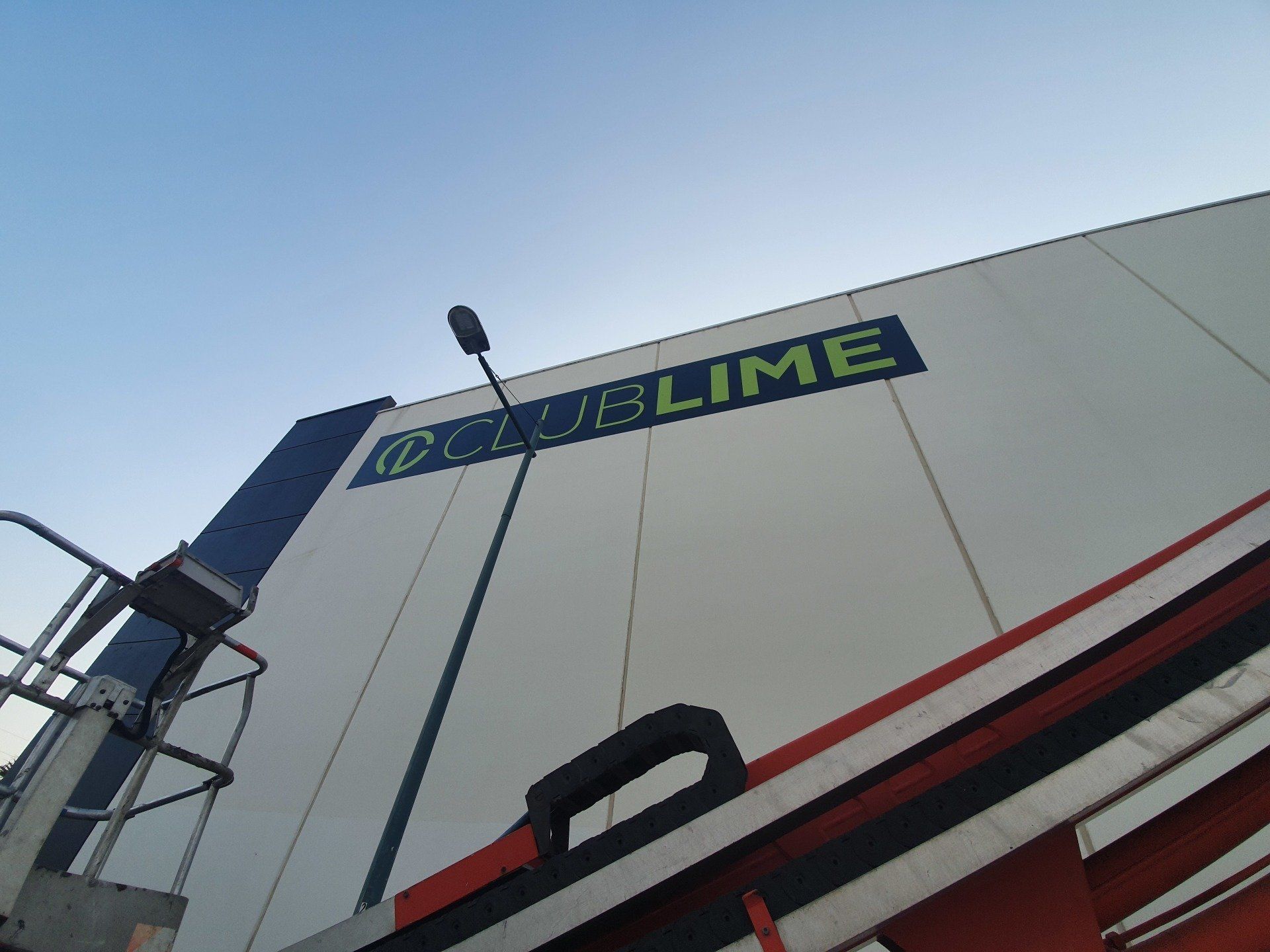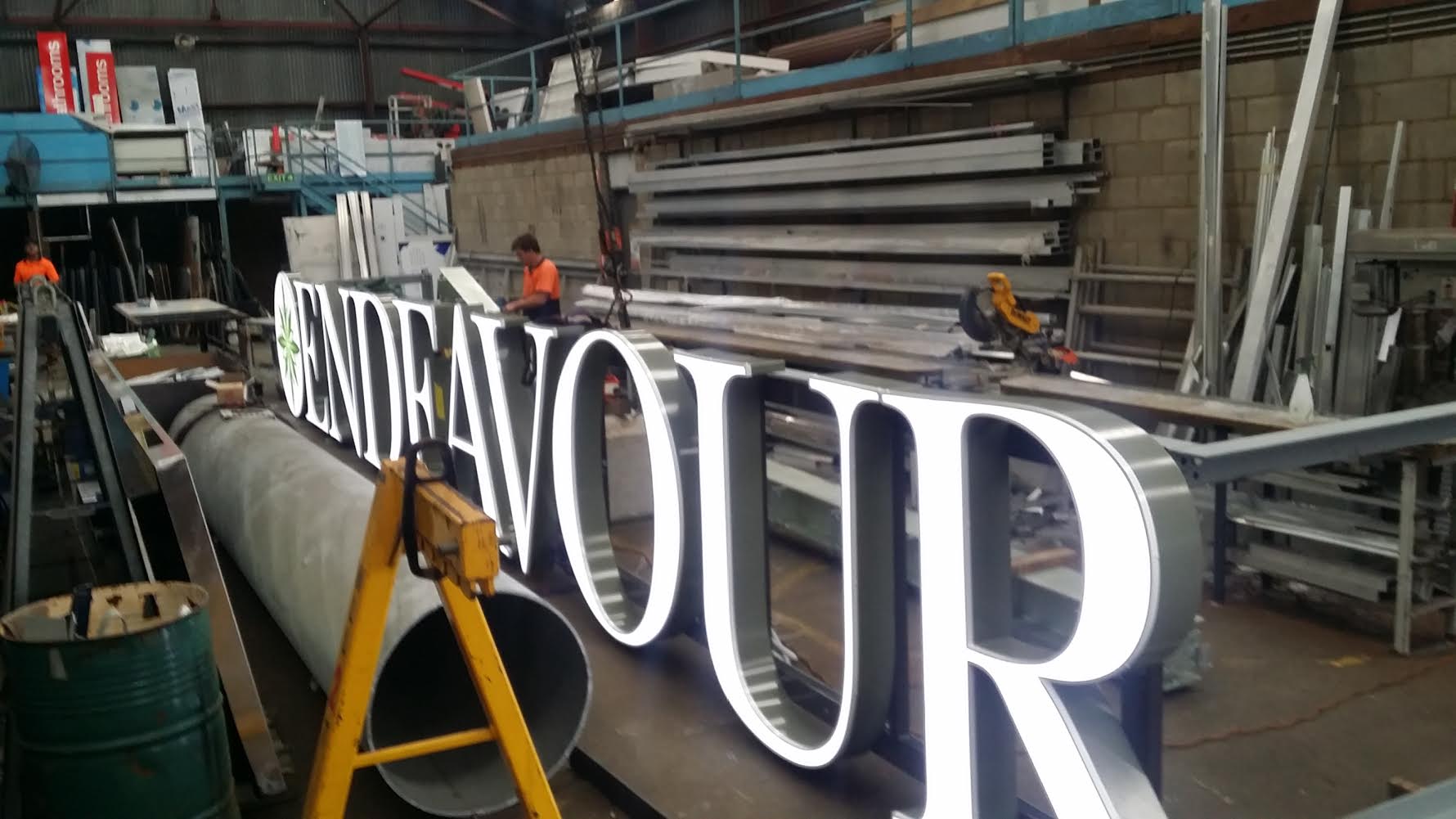Building Signage That Works: How to Stand Out, Stay Safe, and Stay Compliant
Few things are as impactful when making a strong first impression as your building signage. Whether your business is attracting customers, guiding foot traffic, or reinforcing your brand identity, the right building signs and signage can make all the difference in the marketing and advertising world.
Building signs are essential in the business landscape, they provide a more established feeling, wonderful first impression and done well with visual appeal, are a cost effective advertising expense and marketing tactic to provide increased awareness to your business, draw passersby and enhanced branding.
With so many benefit building signs create, they are just a good option. However, building signage in Australia needs careful planning and also needs to meet compliance standards.
This blog breaks down the essentials every business should know before installing building signage, from design assets to council permissions.
Types of Building Signage
Building signage comes in all shapes and sizes, each serving a different purpose from creating awareness, to making your business location stand out for potential customers and for clients visibly to see directional signs. Here are some standard options for building signs:
- Fascia Signs: Building signs fixed to the front of a building, often bearing your company name and logo.
- 3D Lettering: Adds depth and a premium look to brand names or directional building signage.
- Illuminated Signs: Highly visible signs are perfect for exposure at night or in poor lighting conditions.
- Window Graphics: Great for utilising window space to display branding or promotions.
- Architectural Signage: Custom-designed signage integrated into the building’s design. Often used in larger developments, campuses, or offices, this type aligns with the architectural style and enhances overall visual impact.
- Monument Signs: These can be attached to buildings as plaques. Positioned near entrances, driveways, or footpaths, they provide high visibility and are commonly used for creating awareness of a person, event, or brand, especially on monuments, business parks, campuses, and along street frontages.
- The right sign solution should be customised to fit your site and brand.
Design Essentials: What You Need Before Engaging a Signage Company
Before you meet with your signage provider for signage design it pays to be prepared. For correct and fully branded building signs, here's what you should bring to the table:
- Business Logo Files: Provide vector-based files such as .AI, .EPS, or high-resolution PDFs. These formats ensure crisp reproduction at any size.
- Business Brand Guidelines: If available, share your colour palette, fonts, and any usage or design rules for your specific business
- Imagery: Any graphics or photos intended for use on building signs should be high resolution (300dpi for print).
What Colours and Designs Work Best on Building Signs?
- High Contrast: Dark lettering on light backgrounds (or vice versa) ensures readability on building signs.
- Bold, Clean Fonts: Avoid intricate scripts; sans-serif fonts are generally easier to read on signs.
- Consistent Branding: Match your signage to existing collateral for professional impact.
- Material Impact: Chrome, brushed metal, acrylic, or illuminated lettering add dimension and class to building signs in many shapes

Best Placements for Building Signage
Depending on your business requirements, below are a few ways many businesses use building signs.
- High-Traffic Areas: Make sure building signage is visible to strategically target pedestrians and vehicles.
- Above Entrances: Reinforces brand presence and guides foot traffic.
- Corner or Roofline Visibility: Captures views from multiple angles.
- Window or Awning: Additional space for promotional or branding messaging.
A good signage company will help assess the best placement for outdoor signs based on your building’s architecture and local council rules.
Who Does What: Client vs Signage Company
- Client Responsibilities:
- Provide business design assets, branding direction, and desired messaging
- Seek permission from landlords (if leasing)
- Approve your final building signs designs and placement
- Signage Company Responsibilities:
- Offer design mockups and material samples
- Advise on compliance and submit council applications (if required)
- Manufacture and professionally install signage
Permission and Compliance for Building Signs: Leasing or Owning a Building?
If you lease your premises, it’s essential for building signs to:
- Get Written Approval from the Landlord: Most leases require review and approval of signage plans.
- Check Building Guidelines: Some commercial buildings have specific building signage size, placement, or style rules.
- Council Requirements: Even with landlord approval, local councils may still require a Development Application (DA) for external signage.
If you own the building:
- You Still Need to Check Local Regulations: Council rules and zoning laws may apply, particularly for business signage and building signs visible from public roads.
- Consider Neighbouring Properties: Ensure your business signage does not obstruct views or breach height limits.
- Heritage Listings: If the building has a heritage status, additional permits or design constraints may apply for business signage.
A quality signage provider can assist in coordinating these approvals and ensuring your signage meets all necessary sign regulations.
The Risks of Skipping Council Approval
Installing signage without the necessary council approval can lead to significant repercussions for your business:
- Fines and Penalties: Councils may impose substantial fines. In NSW, individuals can face fines up to $660, and corporations up to $2,640 for unauthorised signage.
- Removal Orders: Unapproved signs can be subject to removal by the council, often at the business owner's expense.
- Legal Action: Persistent non-compliance may lead to legal proceedings, including court orders to remove the signage.
- Reputational Damage: Being found in breach of regulations can tarnish your business reputation locally.
Understanding Approval Costs
The cost of council approval for building signage varies by location and the complexity of your signage.
To get an accurate estimate, it's best to speak with your local council or a professional signage consultant.
Choosing the Right Materials for Australian Conditions
Australia's climate can be harsh, so signage materials must be up to the task:
- Aluminium Composite Panels (ACP): Lightweight, weather-resistant, durable signs
- Acrylic and Polycarbonate: Great for illuminated signs and dimensional lettering
- Stainless Steel or Powder-Coated Steel: Durable and corrosion-resistant
- UV-Stable Vinyl Graphics: Perfect for window or flat panel signs
-
Choose materials that stand the test of time, tailored to your building signs location and usage.
Ready to Upgrade Your Building Signage?
Whether rebranding, expanding, or just due for a signage refresh, now’s the perfect time to take the next step. Engage in a business relationship with Unifab Signs. Organise a site inspection or receive a no-obligation quote. Make your building signage work for you—stand out, give the right business impression, gain market share, attract new customers, as well as the above benefits. We are leaders in sign design, cost-effective signage, installation services and maintenance for building signs.
Browse by Categories
- Traditional Signs
- Digital Signs
- LED Signs
- 3D Signs
- Tips and Advice
- News




